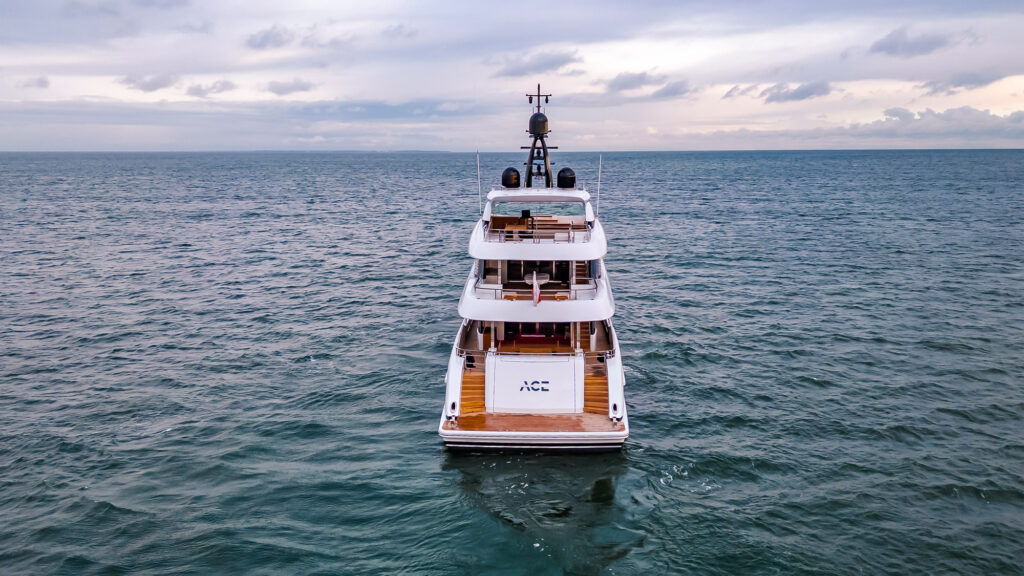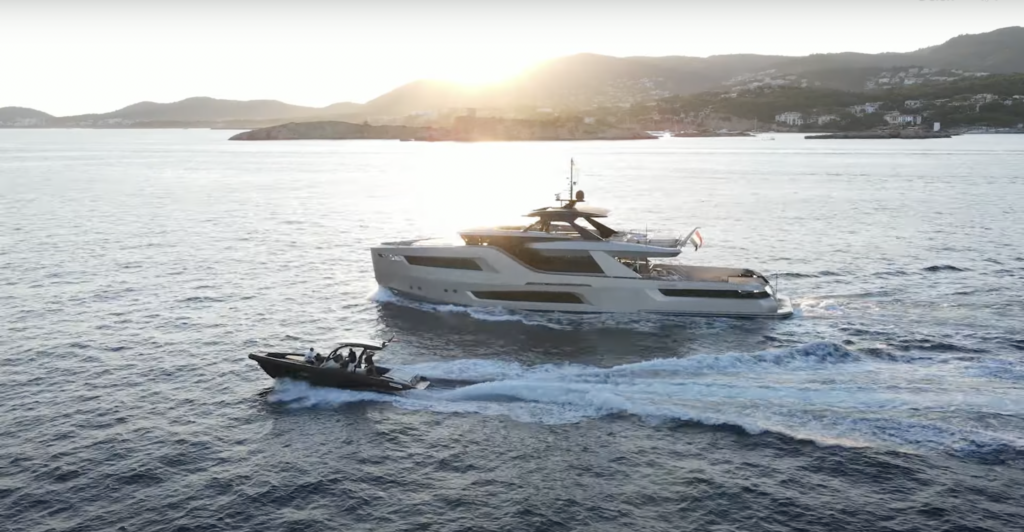Size matters: Engineering, exterior design and naval architecture at every size
Written by: Georgia Tindale
Publication: SuperyachtTimes
The team at the Dutch studio, Diana Yacht Design have 53 years of naval architecture, exterior design and engineering behind them. This encompasses an impressive ream of superyacht projects of all shapes and sizes, from the hardy and head-turning 63.7-metre explorer yacht Scout (2019), through to the 44-metre Conrad C144S ACE (2022), and the 33-metre raised pilothouse yacht Blue Jeans (2022) which already have numerous industry awards under their belts.
Naturally, yachts of such varying sizes present different challenges where the exterior design, naval architecture and engineering are concerned. Here, we speak to Bart de Haan, Naval Architect and Director of Operations from Diana Yacht Design to discover more about the quirks of designing and engineering yachts of all shapes and sizes. With the team currently working on 19 different projects between 25-70 metres in both steel and aluminium, there is plenty to discuss.
How did you start working for Diana Yacht Design?
Diana Yacht Design offered me a job as soon as I finished my studies in naval architecture, and this was my first contact with the yachting world. I had no idea what to expect, but it has certainly not disappointed me over the past 19 years, during 11 of which I have been co-owner, and I am proud to have worked on a such a huge range of fantastic projects.
What are the challenges of completing the naval architecture for vessels of different sizes?
The challenges remain consistent whether you are working on a 24-metre or a 50m+ vessel. The process can be described as a balancing act between managing the client’s needs and expectations and the requirements of what I call ‘the design spiral,’ in which each adjustment you make prompts a reevaluation. Tweaking the hull shape or compressing the deck dimensions can improve performance or stability, whilst still maintaining the desired space on board. Collaboration is crucial, and so we work closely with highly experienced shipyards, designers and brokers.
We are a full-service company at DIANA, so our job doesn’t end when the naval architecture is finished – we are usually responsible for all of the other work which comes with building a yacht, from construction drawing, to designing the engine room, integrating systems, engineering and much more.
Do you find it harder to do the engineering for a 50m+ yacht than a smaller vessel?
In terms of engineering, it’s not necessarily more difficult, but it does involve significantly more work. For a 30-metre yacht, you might construct it in 4-5 sections, including the hull. In contrast, with a larger project, like a 50-60m+ vessel, this could involve building in up to 20 sections. Twice the length can mean 3 or 4 times more volume.
Furthermore, ensuring structural fire safety also involves planning for compartmentalisation and longitudinal strength as the rules and regulations are more comprehensive. Structurally, larger vessels introduce more factors that influence the scantlings; this is one of the most important and challenging tasks found within the entire structural design process.
Personally, I find smaller projects more enjoyable; they progress faster, provide earlier results and often have more involved owners within the whole build process. However, the challenges can be more limited. In contrast, working on 50m+ projects entails a lengthier and more complex process, requiring a comprehensive overview and attention to detail from all angles.
At DIANA, our strength lies in our team’s ability to effectively manage multiple smaller projects concurrently while still successfully handling larger, more complex projects.
What are the challenges of completing the exterior design for yachts of different sizes?
The relationship between the exterior designer and the naval architect is very close during a project. Within DIANA, we have several exterior designers on the team who also have backgrounds as naval architects. In such cases, the balance between achieving aesthetically pleasing and feasible designs is almost inherently maintained. Considering the design from two perspectives—both aesthetic and technical—allows us to achieve a more holistic approach to the overall design.
On a larger vessel, it’s easier to conceal certain design elements, making adjustments on the technical side less noticeable. Conversely, achieving this balance is more challenging in smaller designs.
What have been your most enjoyable projects to work on across the size ranges?
I am proud of all of the projects I have taken on. 63-metre Scout is my biggest yacht project to date, with an ice classed hull and a stunning but challenging design, as well as the radically-designed 33-metre Lady Fleur by Holterman shipyard for which we did the hull design and engineering and which features a totally unique tenderlift system which can deploy a large tender without a crane.
I would also mention the 44-metre C144S, ACE from Conrad Yachts – the largest yacht built in Poland to date. Our brief was for a fuel-economic hull with good initial stability and high seaworthiness, ideal for owners who wanted to take on long passages in comfort. Despite the challenges of Covid-19 meaning we had to work remotely, it was an excellent cooperation between us, the yard and the exterior designer.
Over the years, DIANA has been able to take on such a wide, versatile and exciting range of projects, thanks to our expertise which covers all of the areas of yacht design and engineering. This means we can offer our clients a unique synergy of innovative design, naval architecture and engineering and can easily accommodate even the most challenging wishes we are faced with – whatever the size of the vessel!



